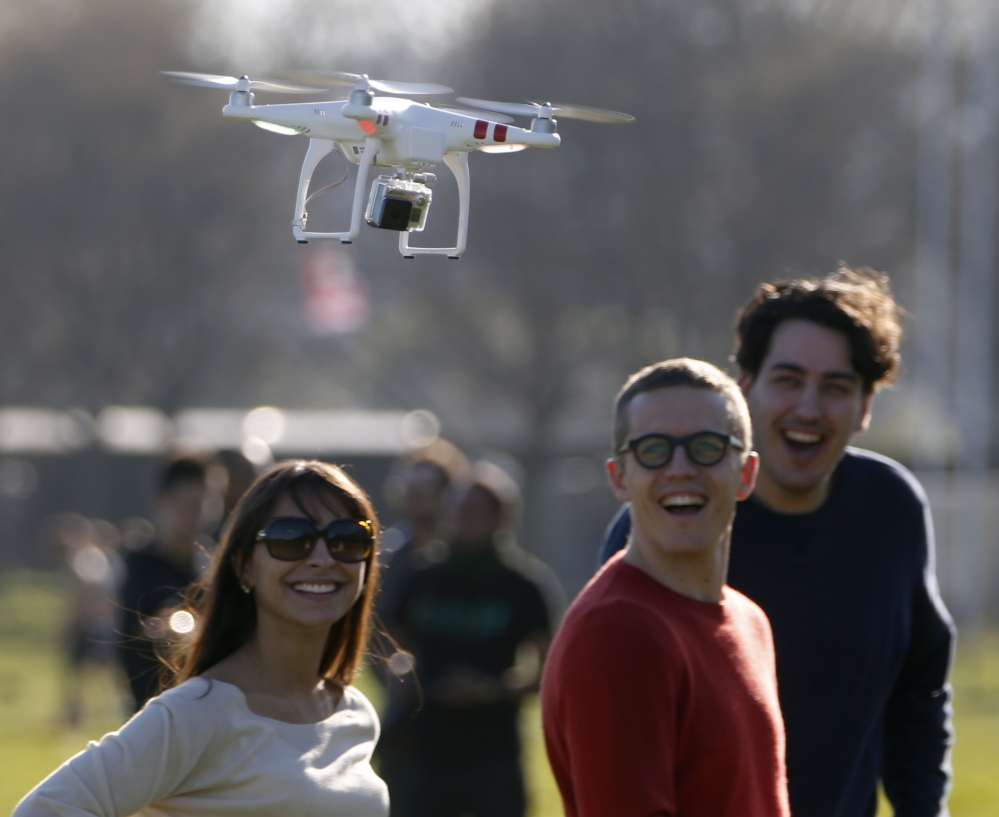WASHINGTON — The U.S. aviation system is unprepared for the proliferation of civilian drone flights and how they would function amid piloted planes, according to a panel of scientific advisers to the government.
There are “serious unanswered questions” about the safety and reliability of unmanned aircraft, the National Academy of Sciences team said in a report Thursday. It raises doubts about whether the Federal Aviation Administration can meet a congressional deadline to begin integrating drones into the airways by 2015.
Drones, ranging from small quad-copters sold in hobby shops to remote-controlled crop dusters, are on the verge of creating revolutionary changes in aviation, according to the study. While the robotic machines offer great potential, “maintaining or improving the safety and efficiency of the nation’s civil aviation system, will be no easy matter,” the panel said.
“Early adapters sometimes get caught up in the excitement of the moment, producing a form of intellectual hyperinflation that greatly exaggerates the promise of things to come and greatly underestimates costs in terms of money, time, and – in many cases – unintended consequences,” the scientists wrote.
The FAA only allows government, academic and manufacturer- test flights of drones under a special approval process. That hasn’t stopped a proliferation of flights, including by surf photographers, Hollywood directors and real-estate agents that is testing the agency’s ability to police the skies.
A proposed regulation allowing small unmanned aircraft weighing less than 55 pounds to be flown commercially is due from the FAA by the end of this year.
The National Academy of Sciences study, requested by NASA’s Aeronautics Research Mission Directorate, called on the FAA and other agencies to begin a research program to study the new technologies and develop techniques for overseeing them.
The Association for Unmanned Vehicle Systems International, an Arlington, Va.-based trade group, forecasts the industry will create 100,000 new jobs and $82 billion in economic impact in the decade after the FAA allows drones to fly among traditional aircraft.
The conclusions by the 17-member panel of academics and industry officials suggest the introduction of unmanned flight will occur gradually as the United States develops a new framework for how to regulate it.
FAA Administrator Michael Huerta told a Senate hearing on Jan. 15 that his agency is taking a “measured” approach to integrating drones into the aviation system. Technical capabilities of the devices don’t meet the agency’s requirements, Huerta said.
The FAA is for the first time considering requests for commercial use of unmanned aircraft.
Seven movie and TV production companies petitioned the agency for permission to use drones for photography, the agency announced June 2.
Increased use of drones faces “many substantial barriers,” according to Thursday’s report.
Send questions/comments to the editors.



Success. Please wait for the page to reload. If the page does not reload within 5 seconds, please refresh the page.
Enter your email and password to access comments.
Hi, to comment on stories you must . This profile is in addition to your subscription and website login.
Already have a commenting profile? .
Invalid username/password.
Please check your email to confirm and complete your registration.
Only subscribers are eligible to post comments. Please subscribe or login first for digital access. Here’s why.
Use the form below to reset your password. When you've submitted your account email, we will send an email with a reset code.